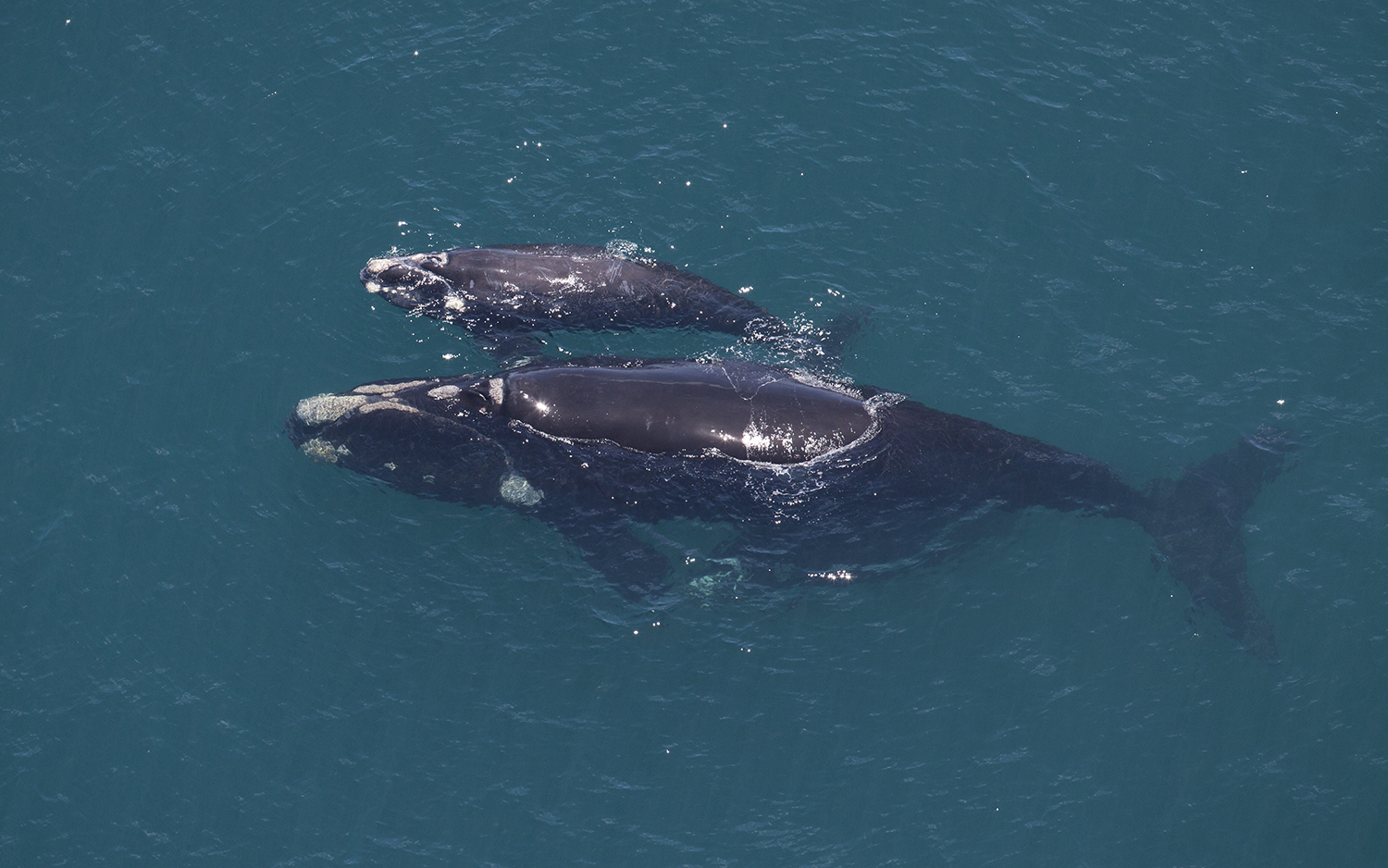This Could Be the 'Beginning of the End' for North Atlantic Right Whales

Researchers who have been observing migrating North Atlantic right whales, which are endangered, are troubled by what they found this season: no sign of any newborns.
The North Atlantic right whale (Eubalaena glacialis) — one of three right whale species, along with the Southern and Pacific right whales, defined by the ocean ranges they inhabit — typically reproduce during the winter months, which they spend in waters off the southeastern coast of the U.S. But this year, the season is winding to a close without any sightings of new babies — something that hasn't happened in nearly three decades of aerial observations, the Associated Press (AP) recently reported.
During the species' reproductive season, the North Atlantic right whale populations average about 17 births per year. Though the number of births has been below average since 2012, the prospect of zero new births this season is "truly alarming," Phillip Hamilton, a researcher with the New England Aquarium in Boston, told the AP. [Whale Photos: Giants of the Deep]
Calving season for these whales begins in mid-November and lasts until around mid-April. At the season's start, the pregnant females migrate 1,000 miles (1,600 kilometers) from northern waters near New England and Canada to their winter homes in warmer waters near Georgia, South Carolina and the eastern coast of Florida, representatives of the National Oceanic and Atmospheric Administration (NOAA) said in a statement released in November.
Every winter since 1989, research planes staffed by NOAA experts have taken to the air and flown over the open ocean to observe the whales and count the adults and new additions swimming near their mothers, NPR reported in February.
But this year, the researchers spotted no new calves at all. And now, with the season nearly at an end, the grim reality is that there likely are none, Barb Zoodsma, a right whale biologist for NOAA Fisheries, told the AP.
The North Atlantic right whale is one of the rarest marine mammals in the world, and right now, their prospects are not looking promising. Approximately 450 of them are left in the wild, and there were 16 reported whale deaths in this species during the summer of 2017 — a record number for a six-month-period — according to the NOAA statement.
Sign up for the Live Science daily newsletter now
Get the world’s most fascinating discoveries delivered straight to your inbox.
Of the 450 whales, only about 105 are breeding females, NOAA reported in the statement. Producing fewer calves — or none at all — means that their dwindling numbers won't be replenished, and the populations will eventually die out.
"It's a pivotal moment for right whales," Zoodsma said. "If we don't get serious and figure this out, it very well could be the beginning of the end."
Original article on Live Science.

Mindy Weisberger is an editor at Scholastic and a former Live Science channel editor and senior writer. She has reported on general science, covering climate change, paleontology, biology and space. Mindy studied film at Columbia University; prior to Live Science she produced, wrote and directed media for the American Museum of Natural History in New York City. Her videos about dinosaurs, astrophysics, biodiversity and evolution appear in museums and science centers worldwide, earning awards such as the CINE Golden Eagle and the Communicator Award of Excellence. Her writing has also appeared in Scientific American, The Washington Post and How It Works Magazine. Her book "Rise of the Zombie Bugs: The Surprising Science of Parasitic Mind Control" will be published in spring 2025 by Johns Hopkins University Press.









